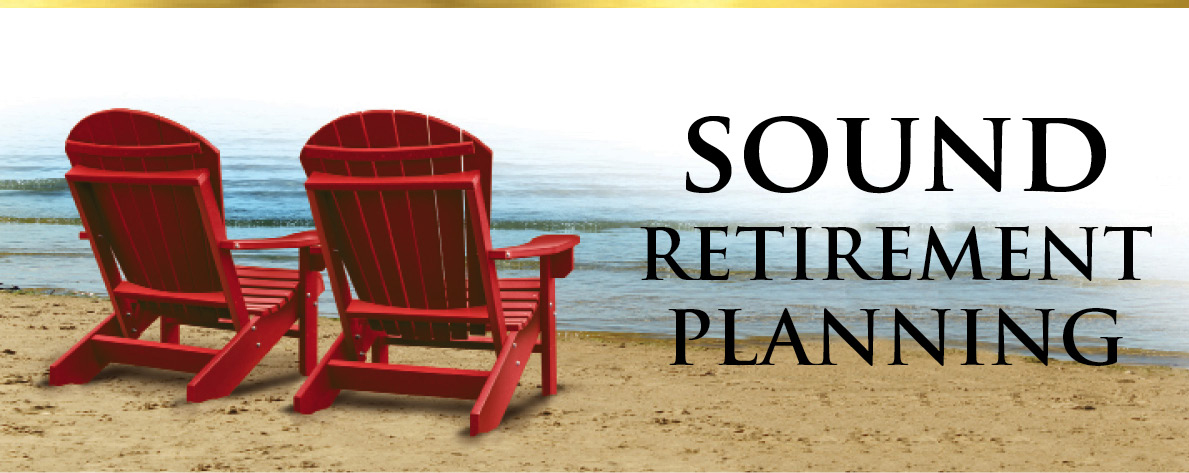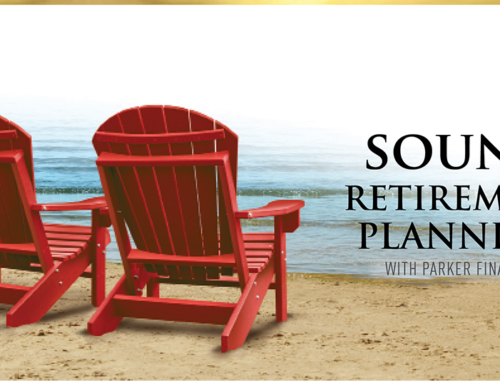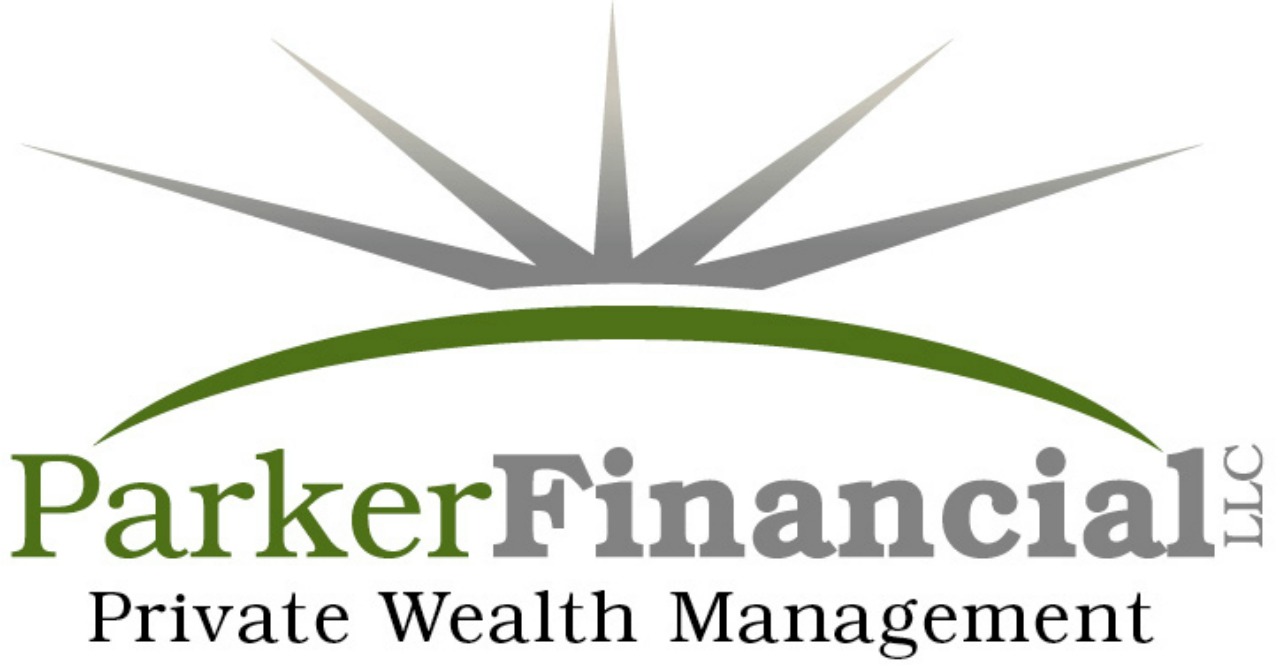Jason interviews Todd Tresidder about how to design a wealth plan that will actually work.
Todd Tresidder graduated from the University of California at Davis with a B.A. in economics and a passion for creating successful businesses. A serial entrepreneur since childhood, Todd went on to build his own wealth as a hedge fund investment manager before “retiring” at 35 to teach others. Today, he provides advanced investment and retirement planning education at FinancialMentor.Com showing you what works, what doesn’t, and why based on a depth of proven experience.
To learn more visit www.financialmentor.com
Below is the full transcript:
••••••••••••••••••••••••••••••••••••••••••••••••••••••••••••••••••••••
Announcer: Welcome back, America, to Sound Retirement Radio, where we bring you concepts, ideas, and strategies designed to help you achieve clarity, confidence, and freedom as you prepare for and transition through retirement. And now, here is your host, Jason Parker.
Jason: America! Welcome back to another round of Sound Retirement Radio. So glad to have you tuning in this morning. We have a great guest lined up, somebody who I believe can really add significant, meaningful value to your financial life as you’re preparing for or transitioning into and through retirement. You’re listening to episode 150. So if you’re driving down the road in Seattle this morning, I just want to remind you, all of these programs are archived at Sound Retirement Planning, for your listening enjoyment. Before we get started, you know we like to start the morning right, two ways. The first way is with a verse to renew our mind, and so I’ve got a verse here for you. This is from Colossians 4:6. It reads, “Let your conversation be always full of grace, seasoned with salt, so that you may know how to answer everyone.” Then, of course, if you’re going to go visit the grandkids this weekend, I’ve got a joke for you to share with them for this season of the year.
Why shouldn’t you tell a secret in a cornfield?
Because the corn has ears.
All right, the jokes keep getting worse, but we’ve got a great episode lined up. You’re listening to episode 150, the Financial Mentor, with Todd Tresidder. I’ll give you a quick bio here, and then we’ll bring Todd on. Todd Tresidder graduated from the University of California at Davis with a B.A. in economics and a passion for creating successful businesses. A serial entrepreneur since childhood, Todd went on to build his own wealth as a hedge fund investment manager before retiring at 35 to teach others. Today, he provides advanced investment and retirement planning education at financialmentor.com, showing you what works, what doesn’t, and why, based on a depth of proven experience. Todd Tresidder, welcome to Sound Retirement Radio.
Todd: Thanks, Jason, but geeze, that intro, man. That was a really corny joke, ha ha ha ha.
Jason: Hey, man, you’re going to fit right in around here. It’s kind of fun that we got to meet. I’ve been doing this radio show now, in the Seattle area, for about eight years, and I got out of my comfort zone a little bit and went to this podcasting social media event where you and I met. So I’m excited to have you on the program. I know that the work you’re doing is impacting a lot of lives, at financialmentor.com. Do you want to just take quick minute and share with our listeners a little bit more about who you are and what you do and what you’ve been teaching people over there at Financial Mentor?
Todd: Yeah. Financial Mentor was founded on the idea of separating financial advice or financial education from the investment product sales component. Now, that doesn’t sound terribly revolutionary today, with the internet. There’s a lot of free education on the internet. But when I first started it, it was revolutionary. This was back in 1998. Back then everybody got their advice from their broker, their advisor, or the media, all of which are filled with conflicts of interest. They all have something to sell just besides the education. So that was the basis from which I started Financial Mentor, was to build a pure education company. You didn’t mention in the intro, but I’ve got five books on Amazon, and things like that. It’s just about educating people and helping them make smarter decisions.
Jason: Awesome. Well, this is going to be a great program. I want to dig into the topic of retirement. Now, you did something really unusual, retiring at such an early age. But if you had just one bit of advice for somebody that’s maybe 55, 57 years old, and they’re just getting ready to retire, what’s the most important thing, in your opinion, that they need to be thinking about?
Todd: What are they going to do with their life after retirement? There’s several aspects of retirement, right? You’ve got the financial side, which is how much money do I need to retire? Then you’ve got the retirement income planning side. Once you are retired, how do you convert those assets into an income stream you can never outlive? That’s a challenging question, because, of course, assets are volatile, and yet the income stream you need needs to be stable. So there’s whole questions around that. There’s these primary topics. One that’s seldom discussed, but it’s the answer to your question, is … Your fulfillment is determined not by your money … I mean, you got to have the money, but that’s just a lubricant to life. It’s really about what you do with it. That’s why you hear all the time about people who within six months of retirement they’re dealing with depression and all kinds of problems.
People don’t realize what their career gave them in terms of connection, community, sense of purpose, reason to wake up in the morning. It’s like they’re a boat and they’re tied by a line called financial need to the dock. As soon as they’re financially independent … Which is what retirement is, right? It’s old age financial independence. Once they’re financially independent, then they are no longer tied to that dock, they’re set adrift. That’s what it feels like for a lot of people, is just being set adrift. The only thing that cures it is having a purpose, having an intent, having something that you want to do a lot, in retirement.
Jason: How did you find that?
Todd: I stumbled on it for a while. First of all, people have got to understand, when I retired at 35, that was a long time ago. I’m 56 as we record this. So I’ve been, quote-unquote “in retirement” for 21 years. I’ve done all the extremes. I did workaholic to build the wealth early on. I did absolutely nothing of substance for a period of time after I quote-unquote “retired”. I did what I called the pro leisure circuit, where the sole purpose of my life was entertaining myself. That worked out fine for a little period of time, and then it got kind of droll after a while.
I found that a lifestyle business is almost the perfect blend for me. I vacation probably … it varies from year to year. It’s almost always at least two months, usually three months, and sometimes as much as four months a year, I’ll vacation. Then when I work it’s pretty much built around the kids’ school schedule. I work quite a bit when I work, because I’m driven by what I’m creating. That’s the thing, is you got to have a purpose, you’ve got to have something that you’re very driven by.
Jason: I love that. You know, when we had a chance to speak briefly at that conference that we were attending, you … We talked a little bit about retirement calculators, and you had some issues with retirement calculators out there. What are some of the issues or problems you see, as people are trying to use these calculators to make assumptions about the future?
Todd: Yeah, well there’s the magic number myth, right? Like we saw the old ING commercials where people are walking around with red numbers on their head, and then when the number hits finally, then they’re suddenly financially independent? They get their number, as it’s called, their number.
Jason: Right.
Todd: That’s a myth. There is no such thing, right? Because if you think about what a retirement calculator does, all it is is a projection of a bunch of assumptions, and so it will only be as accurate as the assumptions which you are projecting. By the way, mathematical projection, not just, you know. Anyway, so when you look at those assumptions, you’ll quickly realize that none of them can be made accurately. Let’s just take a couple, for instance.
Life expectancy. That’s one of the required assumptions, for both you and your spouse, in the retirement calculator. Well, that works fine for insurance companies, the IRS, anything that has an actuarially valid sample size. But for you and me, we’re a sample size of one. We have a binary result, we’re either alive or dead. When you have a sample size of one, there’s no statistical validity to the outcome. What that means, in plain language, is that the chances of you dying tomorrow are no greater or worse than the chances of you dying 20 years from now. Unless you’re very old when we hear this, of which then the odds tilt as you progressively hit later years. The point being though, any one date has no greater odds. So for you to pick a life expectancy, you’re picking an average, but the average doesn’t work for a sample size of one. That’s just one example, right? You could be off by 10, 20 years, and that’s totally realistic with expanding lifespans, as well as biotechnology breakthroughs that are going on for certain diseases right now.
That’s just one example. Let’s grab another one, inflation. Inflation’s a critically important component of every retirement calculation. It’s one of the two key components. The first one is your savings rate as a percent of your income. Your second one is your return on investment net of inflation. So if you get that inflation number wrong by even a little bit, it has a geometric impact on the results you need for retirement. It’s a compounded number. The thing about inflation is there’s people who spend their entire careers studying it. They get a Ph.D. in economics, their specialty is inflation. They can’t even predict it right one year into the future. Yet on a retirement calculator you’re expected to project it 20, 30, 40 years into the future. It’s pure nonsense. What people do is they pick an average from the past, but the past, I guarantee you, will not be the future. The chances of you getting that number right are basically random, and yet it’s a compounded number. A difference of one percentage point or two percentage points can double, triple, quadruple, or halve the amount you need for retirement, making the result almost meaningless.
I could go on and on. Same thing with return on investment. Return on investment, people pick an average, long-term return on investment, but sequence of returns risk is an absolutely key factor in this. Sequence of return risk primarily exists in the first few years of retirement, and it occurs from periods of high valuation. So not all periods of return are equal in terms of your expected return on investment, even for conventional asset allocation portfolios. Yet most people, when they’re doing these calculations, they have no idea. They’re just using average numbers and assumptions and long-term things, not realizing that the long term is made up of all kinds of five and 10 year periods that can absolutely make or break your financial outcome in life.
Jason: So, Todd, ultimately what people want these numbers … It’s this important, right? Because this is the exercise people are going through to try to achieve more confidence, and really what they want is confidence.
Todd: Yeah.
Jason: So, if they can’t depend on life expectancy assumptions, if they can’t make some assumptions about inflation or return on investments, how in the world are you supposed to enter into retirement with some sense of confidence that everything’s going to be okay, that the numbers are going to work the way that you hope they do?
Todd: Right. Well, I explain the thing in detail in my book, which is How Much Money Do I Need to Retire? You can get them on Amazon, but let me give you the rough outline right now. The idea is that the traditional calculation of how much assets you need … What we’re talking about is an asset based model. That’s the traditional retirement planning model, is an asset based model. How much money do I need? How many assets do I need to accumulate? Right? That tells you one portion of the picture. It’s not a wrong portion, it’s not a right portion, it’s just one viewpoint. So you absolutely want to make the calculation, because it points true north. It’s worth doing, right? It doesn’t give you exact directions or an exact outcome, but it’s like that star that points true north. It gives you a target to head toward.
Now, another one is what I call the lifestyle model, okay? The lifestyle model is where you can take those numbers, and then you start playing with lifestyle considerations to figure out how you can pad that number, how you can make ends meet even if they don’t on the calculator. So there’s a lifestyle model that I teach.
Then there’s also what I call the cash flow based model, which is the model I personally prefer and I used. Which is basically, financial independence is defined as cash flow from investments exceeding expenses, your lifestyle expenses. When you have that, when you have passive cash flow in excess of expenses, you’re infinitely free, right? In terms of financial freedom numbers, there’s an infinite time horizon. You don’t have to go into safe withdrawal rates or any other [inaudible 00:12:00] equations. What that does is, the cash flow based model is extremely robust because it gets rid of a lot of assumptions. It gets rid of inflation assumption. It gets rid of life expectancy assumption. It gets rid of a lot of these arcane assumptions, because you’re merely living off the cash flow from the investments, which historically has been more stable than the actual value of the investments themselves. So that’s another model.
A fourth model I teach is called buckets of risk, where you isolate your primary needs, just for survival needs. You isolate those into extremely stable forms of income stream. It’s kind of an adaptation from the cash flow based model. But then you have your other assets, which are more volatile, which are for discretionary spending. I call that buckets of risk model.
So there’re models explained in the book that will show you how to wrap your arms around it. Not one of them is right or wrong, but all of them taken together give you a complete picture and will give you some confidence in where you’re going.
Jason: Boy, I love it. For our listeners, for our longtime listeners that have been listening to me rattle on for the last eight years, I hope you all heard what he just said. Retirement is all about cash flow. It is your income that will determine your lifestyle in retirement, not your net worth. Then this idea of diversifying over time, using a bucket approach, is something that we’ve been a big fan of, Todd, where the money that you need in the short term … You just don’t want to take risk on assets that you’re drawing for income, because you don’t want to be pulling money out of an account that’s falling in value. It’s like being stabbed and going to donate blood at the same time. That’s really great.
I wanted to ask you a question, because this is an area where we believe you have the most influence when it comes to a good financial plan, and we built some software around it recently to help people with this. How important is it for people to understand their spending in retirement? How important is it to understand their budget as they make that transition into retirement?
Todd: Well, it’s everything, right? Because how much assets you need is a multiple of your spending rate. That’s one of the things with what’s known as the FIRE, or Financial Independence, Retire Early community, that they got right. Is they figured out something, which is if you can get your spending below a certain threshold, a lot of things change. For example, if you can get your spending down to a very low effective tax rate, not marginal tax rate but effective tax rate, you can also qualify for things. Like in the U.S. you’d qualify for Obamacare subsidized. Your tax rate is low. Your expenses just fall through the floor at a certain threshold of income. So what they figured out is get your income needs down to a certain level by buying down your lifestyle or just not spending much, like finding happiness on less money.
Because retirement or financial freedom, the assets required is a multiple of your spending, so it has this kind of compounded … not compounded effect, that’s the wrong … it is a multiplicative effect. You need fewer assets by spending less, and you can save more by spending less. So the combination allows you to accelerate your speed with which you can achieve financial independence, using a conventional model, by the way. There’s unconventional models using alternative assets where you can achieve the same outcome without having to live a lean life.
Jason: What do you mean by alternative assets?
Todd: Well, real estate and business would be considered nontraditional assets for retirement planning, but if you look at it, there’s three asset classes you can use to build your wealth, right? You’ve got real estate, business entrepreneurship, and then traditional asset allocation paper asset portfolios. A lot of people don’t realize it, but they have more in common than they have difference. For instance, direct ownership of real estate is half an investment, half a business that you run. Or running your own business, how different is that from owning a share of stock, right? A share of stock is equity in a business. You just happen to own all the shares of stock in that business and a controlling interest. These assets have unique characteristics that allow you to do different things with them. They work different within the math of how wealth compounds. If you really want me to go … Do you want me to go into it, Jason?
Jason: No, let’s-
Todd: Because I don’t want to just go off on a tangent.
Jason: No, no, no, let’s not get that deep, because there’s … I have a bunch of questions I want to ask you here, and we’re running out of time.
Todd: Sure, sure. That’s why I wanted to check in with you.
Jason: Yeah. Folks, if you’re just tuning in, you’re listening to episode 150. I have Todd Tresidder on the program. You can find him online at financialmentor.com. Unique story, retired at 35. At this conference I was at, we were surrounded by, I met a lot of people of this FIRE community, Financially Independent, Retired Early. Guys that retired at 30, 40, 50 years old. It’s fascinating to me. Todd, you say retirement’s not a number, but in some ways it really kind of is. It’s a cash flow number, like you say. When you get the budget down to the point where your spending’s not excessive, and the income that you have coming in is greater than what you spend, there is a number associated with that transition, wouldn’t you agree?
Todd: Yeah, I agree with you the math is the math, and it’s all quantitatively driven. What I’m trying to say is that the number … There’s no such thing as a magic number. The future is never exactly as your assumptions would predict, and therefore there is no such thing as an exact number. You don’t achieve financial independence when you hit $1,110,000, or some exact number that your calculator shows. It’s always a kind of target, or as I said, a star that points true north. It’s not precise.
Jason: Yeah, I think that’s a great point. I want to back up to what you said a moment ago, because you talked about sequence of return risk, and you talked about the rate of return, and that during different periods of time, especially high valuations, it may not be safe to assume historical rates of return. I think some people would argue, Todd, that we’re in a period of time like that right now, where we see cyclically adjusted price to earnings at some of the highest levels we’ve ever seen the last 120 years, based on the CAPE ratio. That being said, what kind of return assumptions do you think people should be making about their portfolio, if they’re just getting ready to retire right now?
Todd: It’s probably one of the worst times in history to be ready to retire, right now. I know that’s not anything anybody wants to hear that’s facing it. There’s a kind of a twofold issue right now, which is you’ve got historically low interest rates as well as historically high market valuations, at least as measured by the U.S. markets. International markets can be different. Just to correct, it’s not the highest CAPE ratio in history, it’s just second. It’s second only to 2000 top.
Jason: Yeah.
Todd: So it’s in the top 5% of all historic time periods of high valuation. Those high valuations provide historically low expected returns. This one’s particularly dangerous because of the artificially low interest rates caused by the government influence over the interest rate market. So the one thing retirees have to be very careful of is an assumption built into many portfolios right now, and that’s particularly true for risk parity portfolios where they’re over weighted in bonds. There’s a lot of analysis showing that bonds are inversely correlated and they provide diversification cushion. That’s only true part of the time. There’s also what are called inflationary driven bear markets, where bonds provide diversification value and stabilize portfolios on the downside, as in deflationary bear markets, which is all most active adults have known in their lifetime. Because we haven’t seen them in most adult lifetimes right now, because it’s from a while back.
But they do exist in history, and inflationary bear markets you can have both stocks and bonds correlate to the downside, which are particularly dangerous. The issue is … If you want me to go into the sequence of returns risk I can, Jason, if you want me to dig into that.
Jason: Well, I appreciate you touching on this, because I think that, again, as I have the opportunity to hear concerns from the people around the country right now … They want to retire, their portfolios have been growing at an enormous rate, and they say, “Okay, now is the time.” But they’re concerned. I mean, they’re looking out into the economic landscape, and some of them are saying, “Oh, I’m going to just work one more year, just to be on the safe side,” or work a little bit longer so they can get health insurance.
Todd: Yeah, it’s not that, though.
Jason: No? What do you think it is?
Todd: Yeah, one more year isn’t going to change it. See, here’s the thing, Jason, that most people don’t understand. It’s not the draw down itself that’s the danger. It’s not the temporary loss in assets that’s really the problem. It’s a prolonged period of nonperformance that kills a retiree, because if they’re drawing down their assets … Like, let’s use the 4% rule as an example, and let’s go back to the 2000 top in the U.S. markets. The conventional wisdom is that the markets will hit new highs, right? Which they do, and there’s reasons why that’s true. It has to do with the return on investment equation for stocks, right? So it’s built into the math, and that’s why it’s true and it will always be true. But the problem is, the markets may make a new high, but your portfolio won’t, if you’re a retiree and you’re living off your portfolio and you go through a prolonged period of nonperformance. So the real danger …
Use two examples. The ’87 crash was a short-lived aberration, likely caused by portfolio insurance back then. That’s a whole other conversation we can go into. But that, because it was a momentary affair, it was not a problem for retirees. The 2000 top, for people that retired shortly before the 2000 top, it was a serious problem. Because they went through 12, 13 years of nonperformance. If you take the 4% rule, just as a rough approximation, you’d be down 50, 60% while the market’s making new highs, and that’s before even adjusting for volatility. So that’s the real danger, is prolonged nonperformance, and that’s what happens from periods of high valuation and low interest rates.
Jason: Oh, that’s really important. I want to ask you about the opportunities that you see. Because the world’s not bleak and grim, and I think there’s a lot of opportunity today. So, as you look out into the retirement landscape and you think about people that are wanting to make that jump, that leap, where are the opportunities? How would you be thinking about retirement? Or advice [crosstalk 00:22:01]-
Todd: I’d be looking at alternative asset classes. I wouldn’t be looking at traditional assets. I think you have to really look at what you’re comfortable with. A lot of people are finding comfort in real estate in specific locations, where they’re trying to live off the cash flow from the properties. I’ve actually seen clients where they’ve divested a portion of their paper asset portfolio to buy real estate free and clear. What they’re doing is they’re treating it as an inflation adjusting bond that they can never outlive, the income from it. That’s one strategy I’m seeing people put in practice. Another one is international markets. There’s some great values offered over in international markets.
I don’t predict the future at all. However, the future is correlated with the valuations at the time of your investment, so you can look at valuations and make some reasonable guesses about intermediate term returns, like seven to 15 years. Another place that’s interesting is quite a few commodities. I’m not saying buy the commodities themselves, but commodity stocks do correlate sometimes, so that’s another area to be possibly looking at. Look at areas that haven’t had great performance and haven’t been affected by some of the asset inflation characteristics we’ve seen in so many markets lately.
Jason: We only have about a minute, Todd, but if people visit your website, Financial Mentor, how can they get the most value out of the work that you’re doing there?
Todd: Well, there’s a lot of free resources. I have one of the largest collections of free calculators on the internet, so that’ll help them. I have one of the top ranked retirement calculators, so they can look at that. It’s quite unique from most retirement calculators, at least I’m told, and that’s why I created it. Subscribers get free … they get a free book, 18 Essential Lessons from a Self-Made Millionaire, and a free course, which is 52 Weeks to Financial Freedom. What it does, it doesn’t … You won’t get rich with it, I don’t do that stuff, but what it does do is it gives you the framework for achieving financial independence at any age.
Jason: All right, and with that we are out of time, but I wanted to thank you again for being a guest on Sound Retirement Radio.
Todd: Thanks for having me on the show, Jason.
Announcer: Information and opinions expressed here are believed to be accurate and complete, for general information only, and should not be construed as specific tax, legal, or financial advice for any individual, and does not constitute a solicitation for any securities or insurance products. Please consult with your financial professional before taking action on anything discussed in this program. Parker Financial, its representatives, or its affiliates have no liability for investment decisions or other actions taken or made by you based on the information provided in this program. All insurance related discussions are subject to the claims paying ability of the company. Investing involves risk. Jason Parker is the president of Parker Financial, an independent, fee-based wealth management firm located at 9057 Washington Avenue NW, Silverdale, WA. For additional information, call 1-800-514-5046, or visit us online at soundretirementplanning.com.






